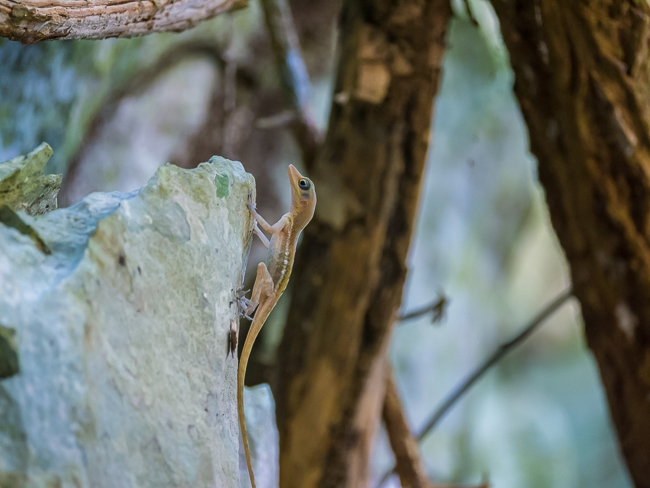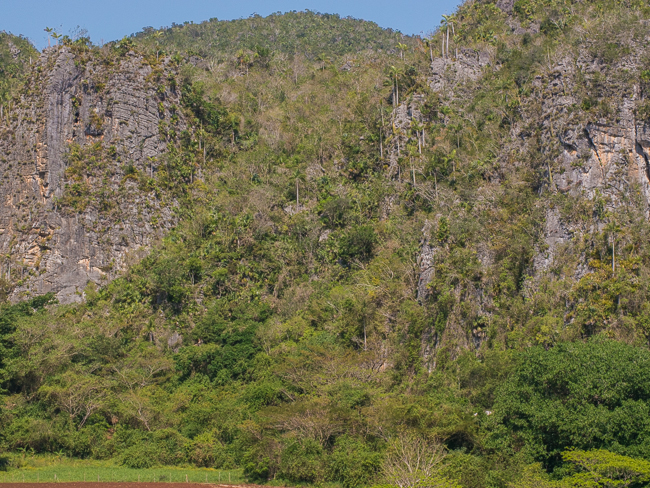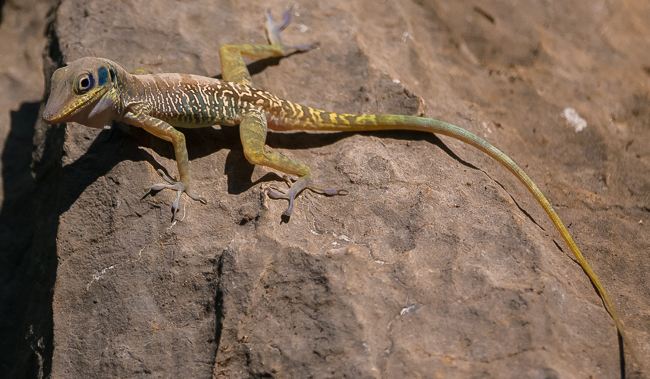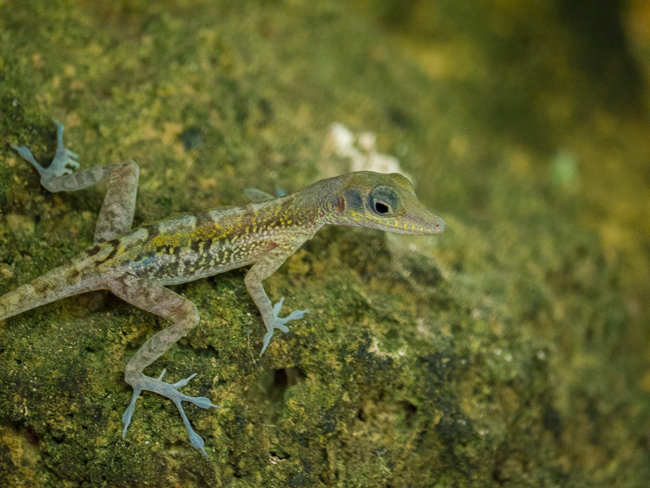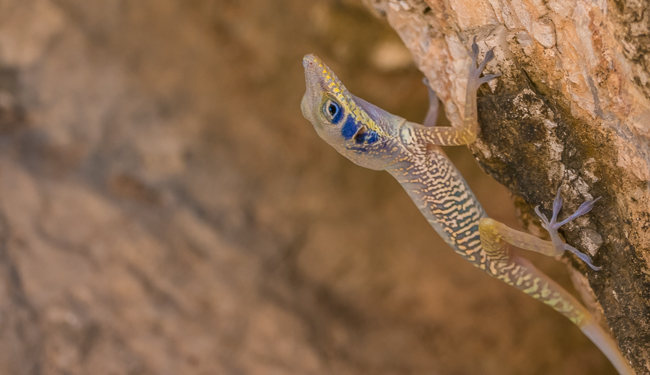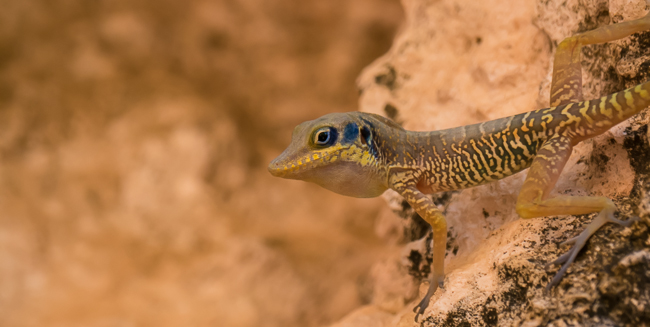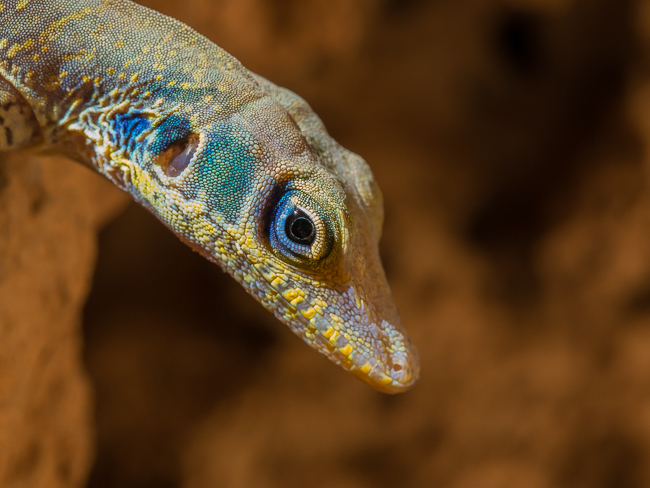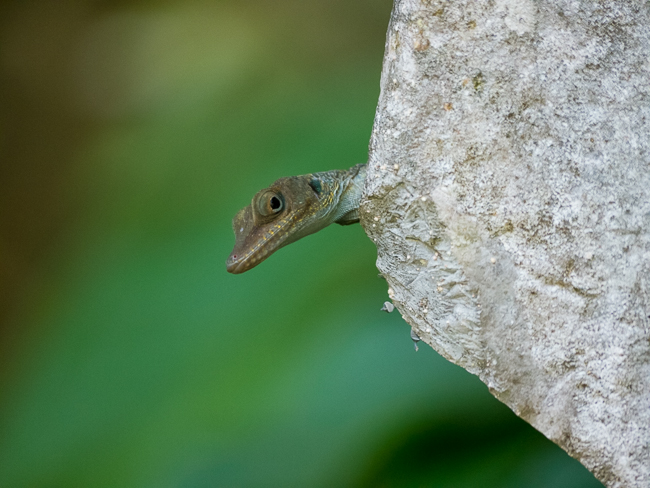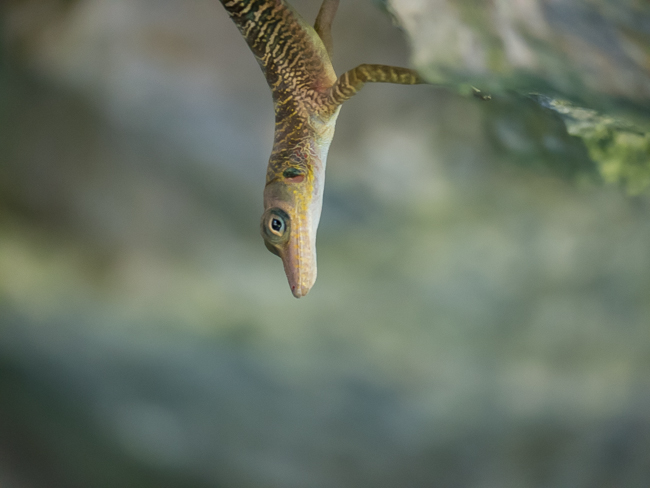| Online: | |
| Visits: | |
| Stories: |
Spotlight on Cuban Anoles, Part I: Anolis bartschi
Recently, frequent Anole Annals contributor Martha Muñoz and I had the opportunity to visit Cuba as part of a licensed trip through the Harvard Museum of Natural History. During our two weeks on the island, we visited many localities and had the opportunity to photograph and observe some of Cuba’s most beautiful anoles. In the coming weeks, I’ll be spotlighting some of our favorites. All images presented are © Shea Lambert 2014.
First up: Cuba’s Western cliff anole, Anolis bartschi.
A. bartschi is found only in Cuba’s western-most province, Pinar del Rio. There, near the town of Viñales, towering limestone hills called mogotes erupt from the surrounding valley. These impressive structures are home to the “mogote lizard.”
After a visit with a local tobacco farmer, we walked to the base of one of these large mogotes. Following a few tense minutes, we spotted out first individual.
Needless to say, we were quite excited. The first thing anole enthusiasts might notice about A. bartschi is that it lacks a dewlap. Nevertheless, their displays included inflation of their throats, giving the impression that these anoles “miss” their ancestral condition. The males also engage in a series of head bobs during displays.
Another interesting attribute of A. bartschi is the exaggerated morphology of the hind-limbs and feet. The long length of the hindlimbs was immediately noticeable, and check out those toes! One must assume this morphology assists A. bartschi in scampering up, down, and all around its karsty domain.
Later, we visited a small cave nestled in a mogote. This area was frequented by tourists, and the A. bartschi lurking outside the entrance didn’t mind posing for a few photographs.
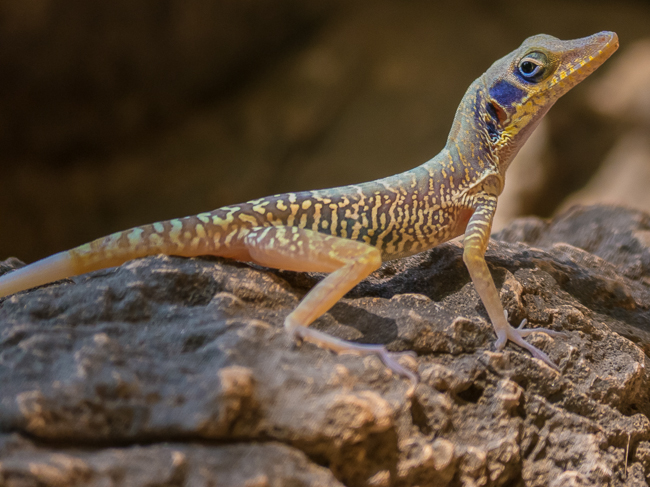
This anole was anything but shy. In fact, it calmly posed as I positioned my macro lens just inches from its face.
The full resolution version of this image is a lot of fun. Here’s a link that I’ll keep up for a little while (note: the image is ~90mb). Another thing to notice is the folds of skin behind the ear. I’m not sure exactly what’s going on here, but the folds did seem to allow for expansion of the gular skin during displays.
Later that same day, we found more individuals by a popular tourist destination, La Cueva del Indio, always on limestone rock.
Unfortunately, we were only able to observe A. bartschi on a single day of our trip. Overall, I found them to be among the most charismatic and beautiful of the species we observed. Thanks for reading, and stay tuned for more Cuban anoles!
Source: http://www.anoleannals.org/2014/03/29/spotlight-on-cuban-anoles-part-i-anolis-bartschi/





